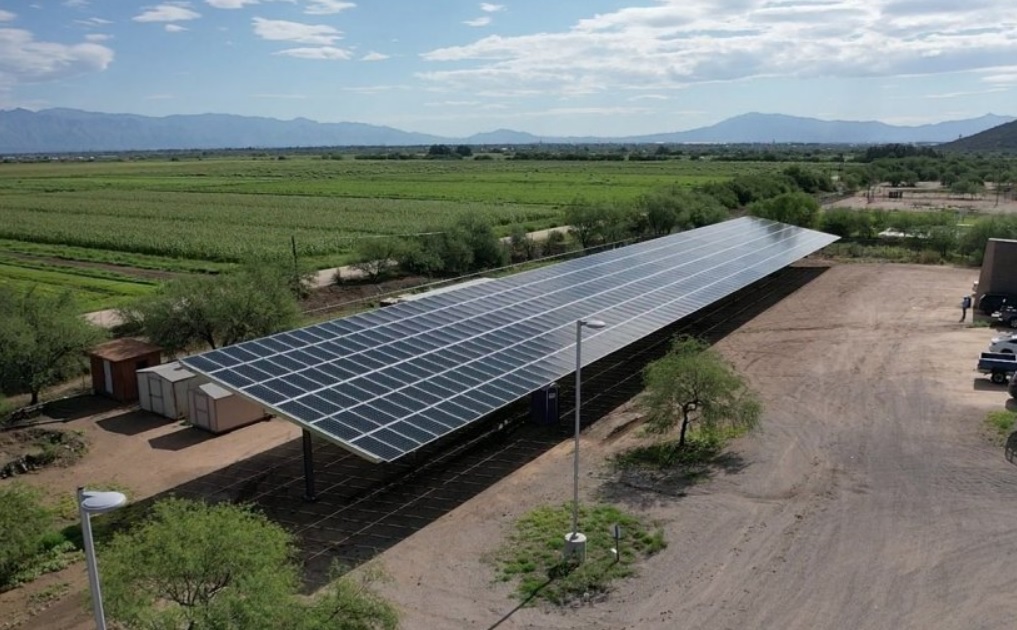The Alliance for Tribal Clean Energy has raised more than $30 million in pledges from major foundations to help launch solar and other clean energy projects on tribal lands.
Tribal communities have begun applying for grants from the fund to cover the costs of predevelopment steps such as feasibility studies, interconnection studies, pre-engineering work and environmental surveys, said Chéri Smith, president and CEO of the Alliance for Tribal Clean Energy.
Completing the predevelopment steps enables a tribal community to apply for loan support from the U.S. Department of Energy’s Loan Programs Office, which has $20 billion in loan support available.
Smith said that at the Alliance’s target funding level of $100 million, the fund could support predevelopment costs for 5.6 GW of solar plus 1.4 GW of other clean energy projects.
Without a predevelopment grant, a tribal community may not be able to pursue a solar project, or may be able to do so only by trading a hefty ownership share of a project for predevelopment funds.
Smith described a “tremendous opportunity” for solar project developers, given the federal support available for clean energy development on tribal lands and the “tremendous amount” of tribal land suitable for utility-scale development.
The Alliance acts as a conduit “and a buffer” between developers and tribes, Smith said. “You don’t work with tribes in a business-as-usual colonial settler manner,” she said. The Alliance conveys that philosophy through its Tribal Clean Energy Summit held each year at the national RE+ conference. The Alliance has also created an online “learning journey for equitable tribal partnerships” called “Pathways to Trust” that Smith said will be hosted on the website of the Solar Energy Industries Association.
The Alliance’s fund is named the Indigenous Power and Light Fund for Energy Sovereignty. Smith said that energy sovereignty “means something different to every tribe, but the overarching concept is, how can tribes be truly sovereign if they’re dependent on outsiders for their energy? They can’t. So generating our own energy is the goal. Some tribes may not be interested in owning or managing big power plants, but that’s their sovereign right to decide.”
“For many tribal elders especially,” she said, clean energy “represents a last chance to regain true sovereignty.”
The Alliance, having raised the first third of its $100 million goal from climate funders, “now needs to expand to other circles of philanthropy,” Smith said, such as high-net-worth individuals and family offices “who are interested in a just transition, climate equity and marginalized communities.”
The U.S. government’s Office of Indian Energy recently launched a similar program that’s providing $25 million toward predevelopment costs for tribal projects, Smith noted.
This content is protected by copyright and may not be reused. If you want to cooperate with us and would like to reuse some of our content, please contact: editors@pv-magazine.com.








By submitting this form you agree to pv magazine using your data for the purposes of publishing your comment.
Your personal data will only be disclosed or otherwise transmitted to third parties for the purposes of spam filtering or if this is necessary for technical maintenance of the website. Any other transfer to third parties will not take place unless this is justified on the basis of applicable data protection regulations or if pv magazine is legally obliged to do so.
You may revoke this consent at any time with effect for the future, in which case your personal data will be deleted immediately. Otherwise, your data will be deleted if pv magazine has processed your request or the purpose of data storage is fulfilled.
Further information on data privacy can be found in our Data Protection Policy.